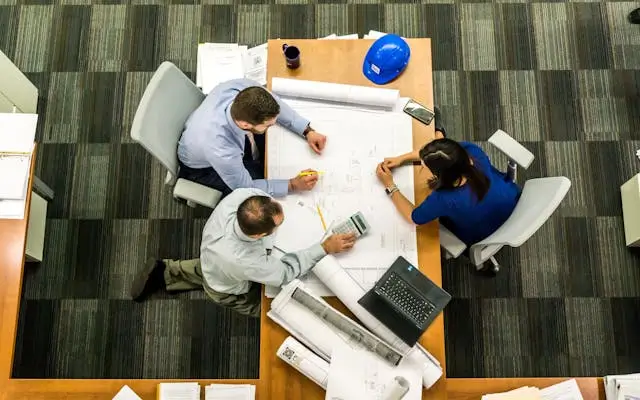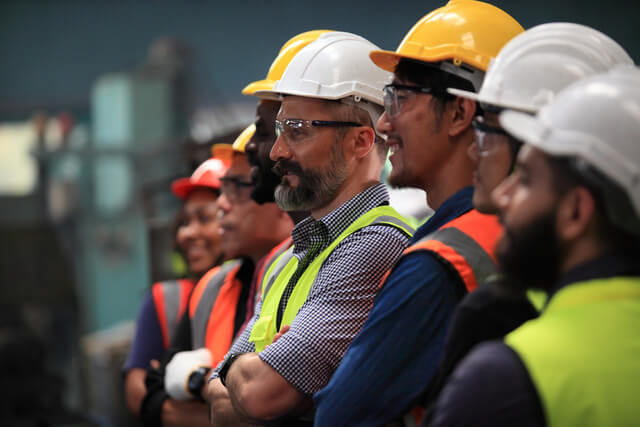Sustainable construction is no longer a niche concern. It’s an expectation. Across residential, commercial, and infrastructure sectors, you’re likely being asked to meet higher standards of environmental responsibility. That shift calls for thoughtful engineering, starting with early planning and continuing through execution.
Civil engineering plays a central role in making sustainable construction possible. Effective strategies can reduce environmental impact, improve long-term performance, lower maintenance costs, and deliver practical benefits to communities.
Engineering Sustainability from the Ground Up
A civil engineering company often enters a project at its earliest stages. That timing matters. Decisions made before a site is cleared can shape everything from energy use to stormwater management. When sustainability is built into the project scope—not retrofitted later—it works better.
This early involvement allows engineers to evaluate the terrain, soil behavior, and water flow before any design is finalized. For example, preserving natural slopes or drainage paths can reduce the need for mechanical systems. Preserving these features supports environmental goals, lowers long-term costs, and minimizes the risk of system failures.
Civil engineers also help select materials that support long-term performance. Permeable pavements, recycled aggregates, and locally sourced fill are often more efficient than standard choices. But these options only work if you account for site-specific variables, which means collaboration is essential.
The Role of Coordination in Sustainable Outcomes
Strong project coordination often has a greater impact than material selection alone. When each team involved shares the same environmental objectives, the entire process becomes more efficient. For example, if the stormwater strategy is adjusted during design but not communicated to the utility crew, installation may follow outdated plans, leading to rework or compliance issues.
Civil engineers often act as a bridge between design and execution. They translate conceptual ideas into practical site plans, often troubleshooting before problems materialize. This alignment between vision and reality is where sustainable intentions become tangible results.
For example, if a building design calls for minimal tree removal, but the grading team isn’t aware of those limits, clearing might exceed the original plan. Regular communication among all disciplines reduces that risk and keeps the project on track.
Cost Efficiency through Better Planning
One of the persistent misconceptions about sustainable construction is cost. While some green building strategies do come with higher upfront expenses, smart civil engineering often offsets those costs elsewhere.
Consider stormwater systems. A conventional pipe-and-basin setup may look cheaper at first glance. But over time, maintenance costs and environmental compliance add up. In contrast, bio-retention areas or swales can manage runoff with less upkeep and better long-term resilience. That’s where sustainable design also becomes cost effective.
Strategic grading and earthworks can reduce hauling and minimize fuel consumption. Choosing the right slope or alignment might not feel innovative, but it can lead to substantial material savings.
Supporting Long-Term Performance with Asset Management
Once construction is complete, the infrastructure must continue performing reliably for decades. This is where asset management becomes essential. Solutions designed with durability and low maintenance in mind can reduce the need for frequent repairs and help maintain consistent function over time.
Civil engineers can set the stage for easier asset management through careful documentation, sensor integration, and digital models. For example, detailed records of utility placement, drainage features, or pavement layers help owners avoid costly surprises later.
How the Design Process Supports Sustainability
When the design process prioritizes sustainability from the start, it’s easier to find solutions that don’t require compromise later. That’s why the early input of a skilled design team matters so much.
Detailed site assessments, digital terrain modeling, and solar power simulations can reveal patterns that aren’t visible in two-dimensional plans. This allows your team to work with the site, not against it.
Detailed design models also help reduce waste. For example, digital grading tools can calculate earthwork volumes precisely, avoiding over-excavation. That cuts down on material transport, fuel use, and disposal—all of which affect a project’s environmental footprint.
Even something as simple as aligning a roadway to match natural contours can reduce both construction complexity and long-term erosion issues.
The Value of Professional Services in Sustainable Construction
You’re probably juggling competing priorities on any given project—schedule, cost, approvals, and stakeholder concerns. This is where experienced professional services make a difference.
Civil engineers contribute far more than technical drawings. They bring expertise that helps align environmental goals with practical constraints. Their work across different project types gives them the insight to recommend lower-impact strategies that still meet performance and safety standards.
For example, they might recommend using low-impact development (LID) techniques on a suburban commercial project, even if those weren’t initially part of the brief. Or they could help redesign a site layout to avoid conflict with protected wetlands.
And because civil engineers are used to working across disciplines, they’re often the ones keeping your sustainable goals in view when project pressures increase.
Final Thoughts
Green materials and ambitious targets aren’t enough to make a project sustainable. It takes clear strategies based on engineering principles, team coordination, and long-range planning. Civil engineers influence how a project responds to its environment, starting with early design and continuing through final implementation.
You don’t have to reinvent how you build. But having the right technical guidance can help you make choices that reduce waste, save money, and improve outcomes long after construction is complete. Sustainable results start with smart design and engineering.

